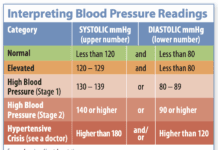Dietary guidelines recommend limiting consumption of red meat (beef, pork, and lamb) to lower risk of cardiovascular disease (CVD) and generally support good health. Replacing red and processed meats with other protein sources (fish/seafood, low fat or fat free dairy products, nuts, soy and other legumes, whole grains, and poultry) is encouraged. A few recent analyses, however, have questioned the validity of these recommendations.
A large, comprehensive cohort study set out to bring some clarity to this controversy. The study included nearly 150,000 participants from diverse socioeconomic and racial or ethnic backgrounds who were healthy at the start of the study. When researchers compared the reported baseline dietary intake of these participants with their medical records, they found that red meat consumption was, indeed, associated with higher risk of CVD. People who consumed the most red meat of any type were more likely to have a fatal or non-fatal heart attack or ischemic stroke (caused by a blood clot in the brain) than those who ate the least red meat. These associations were strongest for African American participants.
This study does not prove cause and effect, but the findings agree with many other studies (including prospective and retrospective studies and the existing small intervention studies) that support limiting red meat intake for better cardiovascular health and consuming dietary patterns containing more plant-based foods, fish, and low fat or fat free dairy.
Additionally, the researchers calculated that replacing just half a serving of red meat a day with nuts was associated with a 14 percent lower risk of CVD. Replacing that half-serving with whole grains was associated with a seven percent lower risk, and fat free milk was associated with a four percent reduction in risk.
While you may have seen headlines suggesting red meat is not as bad for health as we previously thought, the authors of this study (and other experts) point to serious flaws in the design of the two studies that reached that conclusion. Stick with recommendations to replace at least some red and processed meats with other protein sources—especially plants.























